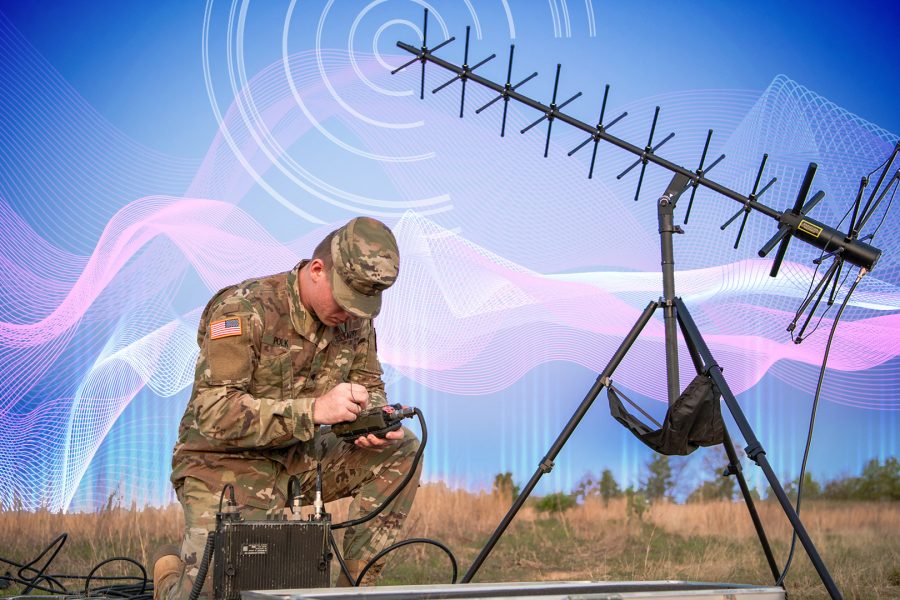The Pentagon cannot afford to lose access to certain parts of the electromagnetic spectrum if it is to proceed with the “Golden Dome” missile defense initiative, a top official told lawmakers May 8. And with the telecommunications industry and some lawmakers pushing to open military radio waves for commercial use, the Defense Department is advocating for secure, strategic ways to share the spectrum with the private sector.
“The only way we can achieve Golden Dome right now is having the lower three of the spectrum,” said Katie Arrington, acting DOD Chief Information Officer told the House Armed Services Committee, referring to the spectrum band between 3.1 to 3.45 gigahertz.
Those frequencies are crucial for about 1,100 communication platforms and weapon systems, she said.
“Those are prized critical capabilities that we cannot lose to provide national security, not just for ourselves, but for our foreign military sales and our allies and partners,” Arrington said, adding that the frequency access is “crucial to win wars, and achieve key presidential objectives, such as southwest border security and Golden Dome.”
Arrington adding that the CIO office is collaborating with the Chief Digital and Artificial Intelligence office and the Defense Advanced Research Projects Agency to optimize its use for the missile defense program.
These midrange bands balance range and resolution; lower frequencies offer range but lack detail, while higher ones provide precision with a shorter reach. The midrange of the spectrum enables radar systems to detect and track fast-moving threats like ballistic and hypersonic missiles, guiding interceptors to targets. Aircraft systems, such as the C-130’s AN/APN-243, also rely on these frequencies to maintain formation in blackout conditions.
Defense leaders have repeatedly emphasized that losing access to or facing interference in this band could weaken key systems like missile-tracking radars and early warning systems. Even losing a portion of this range would cost the Air Force billions of dollars, as it would require costly redesigns of critical capabilities.
As telecommunication giants like AT&T eye government-controlled frequencies, Sen. Ted Cruz (R-Texas) led the charge to auction off parts of the spectrum last year with the Spectrum Pipeline Act.
The Pentagon’s solution is “Dynamic Spectrum Sharing.” DSS aims to identify portions of the spectrum that can be shared with commercial operators without compromising the Pentagon’s ability to defend itself and project force.
In her written testimony, Arrington states that the DOD is “laser focused” on developing technology for large-scale spectrum sharing between government and commercial users, which could unlock significant economic and technological benefits. Arrington argues that DSS presents a “a feasible path for commercial access to spectrum currently used by DOD without harming homeland defense and national security.”
The idea of opening the lower three spectrum band to the public isn’t new; under the previous administration’s National Spectrum Strategy, which sought new uses for over 2,700 MHz of government airwaves, the 3.1–3.45 GHz band was included for detailed study. This led the Pentagon to propose the Emerging Mid-Band Radar Spectrum Sharing initiative, pushing for dynamic spectrum sharing and potential commercial access.
However, experts have raised concerns, noting that it overlooks the potential interference from military signals, which could make long-term spectrum sharing both unrealistic and risky.
Arrington acknowledges the challenge, stating that developing DSS at scale will be a “significant engineering challenge, requiring substantial investment.”
“Dynamic spectrum sharing is a potential capability, but that is yet to be determined,” added Arrington. “It is, I would say, prudent to ensure protection and national security for the taxpayers in protecting the lower three [frequencies].”
The Department is now exploring new technologies for its DSS initiative to address the growing complexity of spectrum reallocation. The Pentagon has issued a request for proposals from industry and is currently reviewing the bids. The DOD plans to showcase the most promising technologies by November, according to Arrington.
